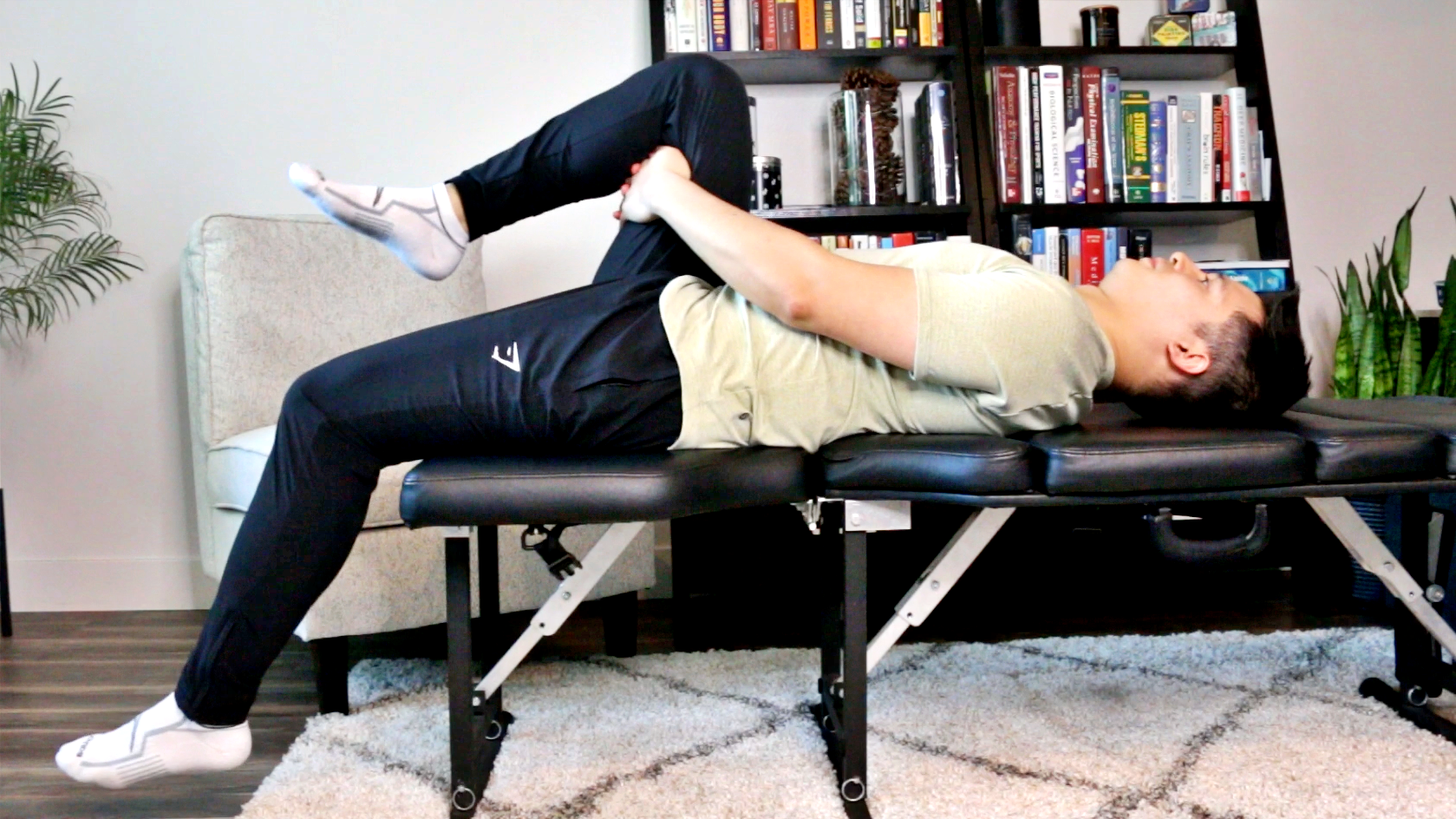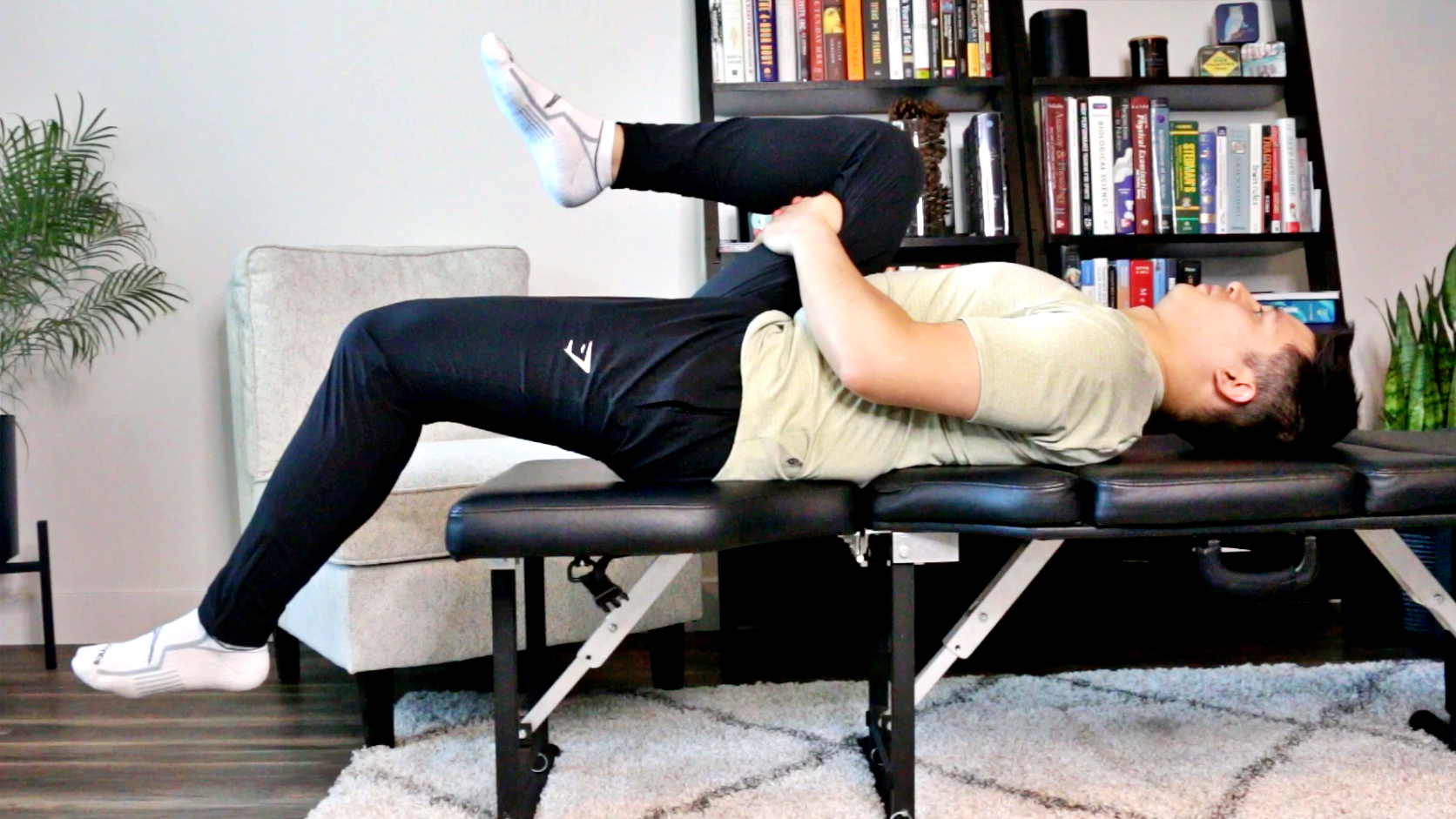Hip Flexor Tightness & Low Back Pain
“You have low back pain because your hip flexors are tight.”
This is a common explanation given for why someone is experiencing low back pain. If there are some other components involved (glutes, abdominals, or lumbar paraspinals), a label of lower cross syndrome might be thrown out there.
But does the research support this claim?
The first step would be to identify if the hip flexors are tight. After all, it would be challenging to claim that low back pain is a result of hip flexor tightness if we don’t know whether the hip flexors are actually tight.
The modified Thomas test is the test commonly used to assess for hip flexor tightness.
A study by Andrew Vigotsky, et al. found that this was not a valid test for hip extension unless controlling for pelvic rotation.The issue is that by pulling the opposite leg towards the chest, it can cause the pelvis to rotate back into posterior pelvic tilt. Which would then limit the amount of hip extension when measured compared to the table. Conversely, an anterior pelvic tilt would increase the amount of hip extension.
Modified Thomas Test
Modified Thomas Test with posterior pelvic tilt which appears that there is a limitation in hip extension
In both of these scenarios, the modified Thomas test would be assessing the lumbo-pelvic-hip range of motion instead of the hip range of motion if the pelvis is not controlled. This is problematic if we are trying to isolate the hip flexors.
But let’s say that we are able to identify that the hip flexors are tight. What is the relationship between hip flexor tightness and low back pain? With how common the hip flexors are blamed for low back pain, there must be a plethora of articles supporting this…
I found just two articles looking at this relationship.
The first study was by Anna-Lisa Hellsing in 1988. This study looked at hamstring and psoas tightness in 999 military personnel over a 4 year period. And she found that there was no correlation between hamstring or hip flexor tightness and low back pain.
The second study was by Delanie Bach, et al from 1985. In this study they compared muscle tightness in runners compared to non-runners. And again, this study found that there was no correlation between muscular tightness and low back pain.
So here we are with a questionable assessment method for hip flexor tightness and two studies that found no correlation between hip flexor tightness and low back pain.
What should we do?
There’s no detriment in stretching the hip flexors. Especially if the hip flexor stretch provides relief, then that is great.
But we shouldn’t be using hip flexor tightness as an explanation for why someone is experiencing low back pain. Not only is it not accurate, it pigeonholes the person into one treatment approach (I mean, if you were told your low back pain was caused by tight hip flexors, you would probably stretch them all the time too).
Instead of focusing on exercises to match the explanation, find exercises to produce the desired outcome. If stretching/mobility exercises reduce the pain, use them. If strength training, yoga/Pilates, or core exercises reduce the pain, then those would be the most useful approaches.
Keep it simple.

